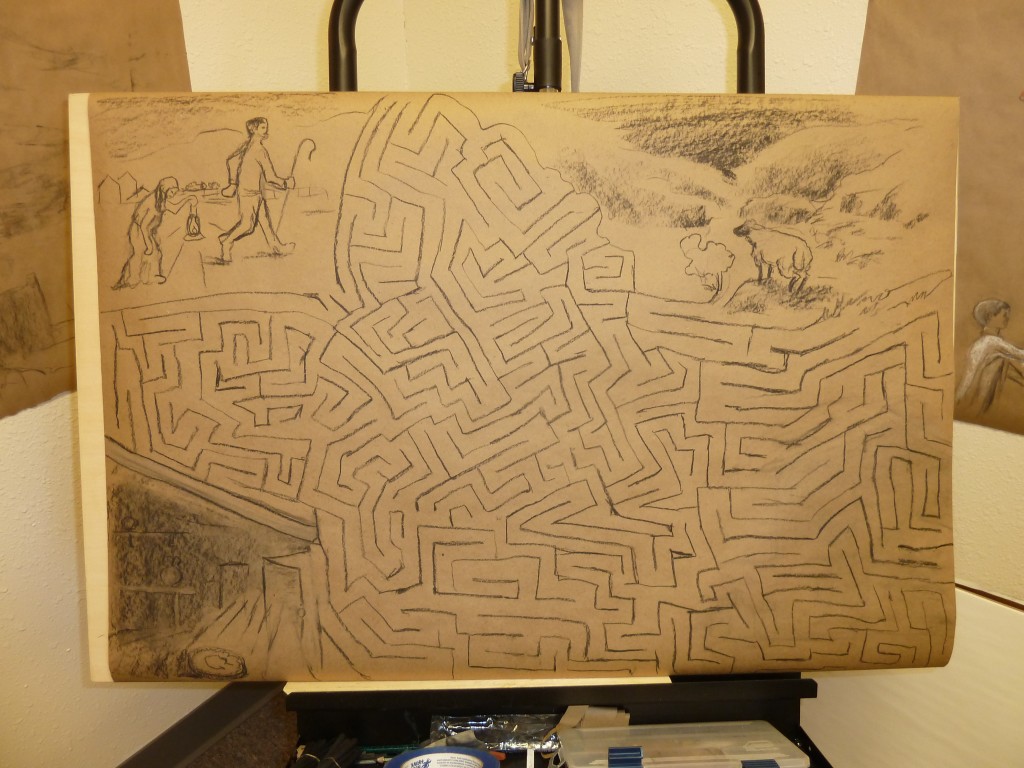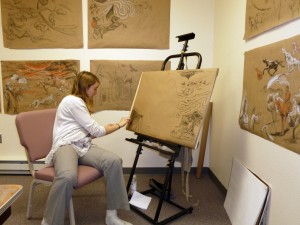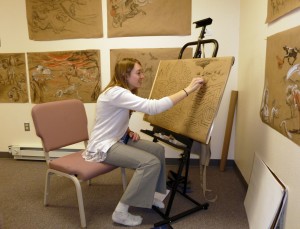The Parables of the Lost Sheep and the Lost Coin are part of a trilogy of parables in Luke 15 about God seeking the lost. Jesus told them in response to the criticism that he “welcomes sinners and eats with them” (v. 2). In the parables the recovery of the lost sheep and the lost coin are occasions for celebration. Indeed, “there is rejoicing in the presence of the angels of God over one sinner who repents” (v. 10).
According to Klyne Snodgrass, “What is revealed about the character of God is the value he places on even the least deserving and the care he extends to such people. God is not passive, waiting for people to approach him after they get their lives in order. He is a seeking God who takes initiative to bring people back, regardless of how ‘lost’ they are” (Snodgrass, Stories with Intent, p. 109).
Therefore, “If God is a seeking, caring God, then his grace should characterize our self-perception and our treatment of other people. The awareness that God seeks us brings freedom and confidence to life. That his grace is to determine how we treat others should cause us to be caring and sensitive” (Snodgrass, p. 110).
Naomi’s drawing uses a maze to illustrate the search. The shepherd and the woman (with lantern) stand at the beginning of the maze, which leads to the sheep in one corner and the coin in another.
As usual, Naomi made the drawing during our class. However, she did stick around afterward to make the maze more difficult. Since Naomi takes the class’s feedback into account, sometimes she erases part of her drawing, as these two photos show.
More art
Additional depictions of the Parables of the Lost Sheep and Coin include art by the usual suspects: Dutch illustrator Jan Luyken (Parable of the Lost Sheep & Parable of the Lost Drachma), James Tissot (The Good Shepherd [c. 1890]) & The Lost Drachma [c. 1890]), and John Everett Millais (The Lost Sheep [1864] & The Lost Piece of Silver (1864]).
James B. Janknegt contributes The Good Chicken Farmer (2003) and The Lost Money (2003).
Eugène Burnard also illustrated both parables: The Lost Sheep and The Lost Coin.
Additional art on the Parable of the Lost Sheep:
- Martin Beek. The Lost Sheep (after Millais))
- Douglas Ramsey. The Lost Sheep.
- Lilias Trotter. Parable of the Lost Sheep.
- Alford Usher Soord. The Lost Sheep.
- Rebecca Brogan. Found: The Parable of the Lost Sheep.
-
John Kohan. Detail from The Parables of Jesus.
(There is also plenty of additional art on the image of Jesus as the Good Shepherd [see here for instance], which often gets combined with this parable. I’ve only included a few of these.)
Additional art on the Parable of the Lost Coin:
- Godfried van Schalcken. The Parable of the Lost Piece of Silver.
-
Domenico Fetti. Parable of the Lost Drachma (c. 1618).
Music
We chose the same three songs to sing during our Lost Sheep/Lost Coin class and our Lost Son class. One was “Far From Home We Run, Rebellious” (AJS #39/SNT #40/LUYH #122)—one of the few parables songs in Lift Up Your Hearts—which is about the Lost Son. The other two refer to all three parables with four stanzas, one for each parable and the fourth to sum things up.
“Shepherd, Do You Tramp the Hills” (SNT #39) is written as a call and response between the questioner and the shepherd, woman and father. Here is the second stanza:
“Woman, do you scour the house, just to find one coin that’s lost?
Since you have the other nine, is it really worth the cost?”
“But that coin you count so small has for me a special worth.
When it’s found, the sight will fill all my house and heart with mirth!’
“It Was God Who Ran to Greet Him” (AJS #37) spells out the parables’ messages: “It was God who ran to greet him…”/“It was God who swept the kitchen…”/“It was God, who as a shepherd…” Finally, “It is God who runs to meet us, conscious of our every need; then, as we in turn help others, God rejoices in each deed.”
There are three other songs in our hymnals based on the Lost Sheep & Lost Coin (and Lost Son) parables: “A Shepherd with a Hundred Sheep” (AJS #35), “And Jesus Said” (AJS #36), and “Shepherd, Shepherd” (AJS #38). Both parables are mentioned in “Christ Came to Save Us from Ourselves” (AJS #32) and “Where Is the Kingdom” (AJS #1), our regular opening hymn. The Lost Coin also gets a stanza in “Go Worship at Emmanuel’s Feet” (AJS #2).
This is the fourth post in a series about the Parables of Jesus Sunday school class I co-taught at Trinity CRC in Ames. In each post, I make a few observations about the parable, share Naomi Friend’s original artwork she drew during our class, post links to other art about the parable, and share our favorite songs about the parable. Previous posts covered the Parable of the Sower, The Parables of the Mustard Seed & the Leaven, and The Parables of the Hidden Treasure and the Pearl of Great Price.


